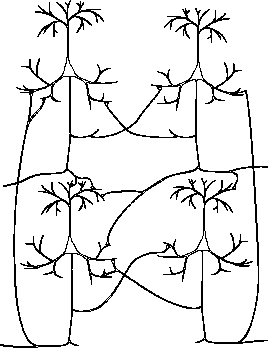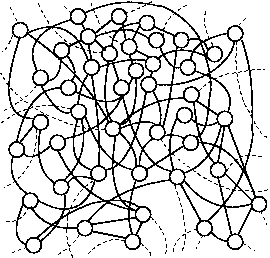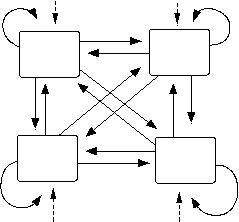
The Bonehead Black Box approach
|
Research Papers
- B. Ermentrout.
Reduction of conductance-based models with slow synapses to neural
nets.
Neural Comp., 6:679-695, 1994.
- J. J. Hopfield.
Neural networks and physical systems with emergent collective
computational abilities.
Proc. Natl. Acad. Sci.-Biol., 79:2554-2558, 1982.
-
J. J. Hopfield.
Neurons with graded response have collective computational properties
like those of 2-state neurons.
Proc. Natl. Acad. Sci.-Biol., 81:3088-3092, 1984.
-
D. H. Hubel and T. N. Wiesel.
Receptive fields and functional architecture of monkey
striate
cortex.
Journal of Physiology (London), 195:215--245, 1968.
- D. Kleinfeld, F. Raccuia-Behling, and H. Chiel.
Circuits constructed from identified aplysia neurons exhibit multiple
patterns of persistent activity.
Biophys. J., 57:697-715, 1990.
-
D. Q. Nykamp. Reconstructing stimulus-driven neural
networks from spike times. Preprint.
-
D. Q. Nykamp and D. Tranchina. A population density approach that
facilitates large-scale modeling of neural networks: analysis and an
application to orientation tuning. J. Comp.
Neurosci., 8:19-50, 2000.
- D. J. Pinto, J. C. Brumberg, D. J. Simons, and G. B. Ermentrout.
A quantitative population model of whisker barrels: re-examining the
Wilson-Cowan equations.
J. Comp. Neurosci., 3:247-264, 1996.
- J. Rinzel and P. Frankel.
Activity patterns of a slow synapse network predicted by explicitly
averaging spike dynamics.
Neural Comp., 4:534-545, 1992.
-
M. Shelley and D. McLaughlin.
Coarse-grained reduction and analysis of a network model of cortical
response: I. drifing grating stimuli.
J. Comp. Neurosci., 12:97-122, 2002.
-
H. R. Wilson and J. D. Cowan.
Excitatory and inhibitory interactions in localized populations of
model neurons.
Biophys. J., 12:1-24, 1972.
|



